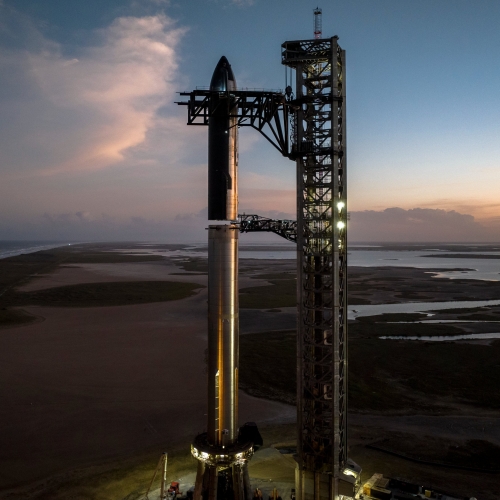ESA looking to SpaceX to launch Euclid space telescope
Capitalism in space: Having lost its Soyuz launch vehicle for its Euclid space telescope because of the Russian invasion of the Ukraine, the European Space Agency (ESA) is now looking at SpaceX as a possible option.
At a meeting of NASA’s Astrophysics Advisory Council, Mark Clampin, director of the agency’s astrophysics division, said his understanding is that the European Space Agency was leaning towards launching its Euclid mission on a Falcon 9 in mid to late 2023.
NASA is a partner on Euclid, a space telescope that will operate around the Earth-sun L-2 Lagrange point 1.5 million kilometers from Earth to study dark energy, dark matter and other aspects of cosmology. The 2,160-kilogram spacecraft was to launch on a Soyuz rocket from French Guiana in 2023.
Europe has for years used its own rockets for its science missions. However, right now the Falcon 9 appears the only option. The last launches of Europe’s Ariane-5 rocket are already assigned, and the new Ariane-6 rocket has not yet flown, is behind schedule, and its early launches are also already reserved.
Nor does ESA have other options outside of SpaceX. Of the rockets powerful enough to do the job, ULA’s Atlas-5 is also being retired, and the Vulcan rocket is as yet unavailable. Blue Origin’s New Glenn is years behind schedule, with no clear idea when it will finally launch.
A final decision is expected soon. ESA could either go with SpaceX, or simply delay several years until Ariane-6 is flying.
If SpaceX gets the job however it will once again demonstrate the value of moving fast in a competitive environment. While its competitors have dithered and thus do not have their rockets ready, SpaceX has been flying steadily for years, so it gets the business.
Capitalism in space: Having lost its Soyuz launch vehicle for its Euclid space telescope because of the Russian invasion of the Ukraine, the European Space Agency (ESA) is now looking at SpaceX as a possible option.
At a meeting of NASA’s Astrophysics Advisory Council, Mark Clampin, director of the agency’s astrophysics division, said his understanding is that the European Space Agency was leaning towards launching its Euclid mission on a Falcon 9 in mid to late 2023.
NASA is a partner on Euclid, a space telescope that will operate around the Earth-sun L-2 Lagrange point 1.5 million kilometers from Earth to study dark energy, dark matter and other aspects of cosmology. The 2,160-kilogram spacecraft was to launch on a Soyuz rocket from French Guiana in 2023.
Europe has for years used its own rockets for its science missions. However, right now the Falcon 9 appears the only option. The last launches of Europe’s Ariane-5 rocket are already assigned, and the new Ariane-6 rocket has not yet flown, is behind schedule, and its early launches are also already reserved.
Nor does ESA have other options outside of SpaceX. Of the rockets powerful enough to do the job, ULA’s Atlas-5 is also being retired, and the Vulcan rocket is as yet unavailable. Blue Origin’s New Glenn is years behind schedule, with no clear idea when it will finally launch.
A final decision is expected soon. ESA could either go with SpaceX, or simply delay several years until Ariane-6 is flying.
If SpaceX gets the job however it will once again demonstrate the value of moving fast in a competitive environment. While its competitors have dithered and thus do not have their rockets ready, SpaceX has been flying steadily for years, so it gets the business.





